Ajax / Scout SV Armored Vehicles Project (UK)
It should be noted that the UK has long been going to modernize the fleet of armored vehicles. Understanding the need to update it appeared in the eighties. Later, the concept of updating the ground forces changed and corrected, but the new equipment has not yet reached the troops. After the war for Folklands and Desert Storm, the first requirements for promising technology were formed. Given the experience of participating in the Yugoslav operation of NATO, the British military have changed the requirements. The current program in its present form was launched in the late nineties.
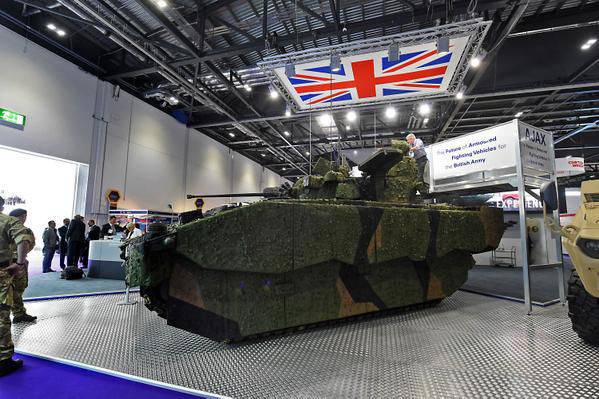
A prototype of the Ajax machine, introduced in the 2015 year. Photo Defence-blog.com
The immediate predecessor of the Scout SV project was the FRES program (Future Rapid Effective System). As part of this program, it was planned to create a family of modern armored vehicles of various classes to arm motorized infantry, reconnaissance, etc. It was assumed that ground forces will be able to quickly deploy to the theater of operations, including at the remote. It was also proposed to pay special attention to reconnaissance vehicles, whose work would allow increasing the strike potential of the troops.
As a basis for a promising FRES program, several developments by foreign companies were considered. So, in the middle of the two thousandth year, General Dynamics European Land Systems joined the program with its offer. Work on the FRES program continued until the end of the last decade. Soon after the issuance of updated technology requirements, which took place at the end of 2008, the decision was made to fundamentally change the program. According to the results of the next stage of work, the development of a new project started, which by now has become the basis of the program for updating the material part.
Even during the existence of the FRES program, European companies developing weapons and equipment offered several existing projects that could be modified if necessary. For example, BAE Systems has joined the program with the CV90 project, and the European branch of General Dynamics has offered the British its new ASCOD 2 armored vehicle. For some time, the customer studied the documentation on the proposals and made a decision.
In 2010, the choice was announced: it was decided to build advanced armored vehicles based on the existing ASCOD 2 project. BAE Systems attempted to protest the decision of the military and "push through" its project, but it was not crowned with success. After the announcement of the choice, a contract was signed worth 500 million pounds sterling, in accordance with which General Dynamics was to finalize the existing ASCOD 2 project in accordance with the requirements, as well as build and test several prototype machines.
Project ASCOD 2, modified in accordance with the requirements of the armed forces of Great Britain, received a new name - Scout Specialist Vehicle or Scout SV. Using the finished project as the basis for Scout SV allowed us to speed up the adaptation work to the requirements. The design work was completed by the end of 2012. A few months later, preliminary tests were completed using a demonstration prototype. After that, the construction of several experimental machines with various equipment started, followed by their testing.
The main objective of the project Scout SV is the creation and mass construction of several types of armored vehicles designed to solve various problems. The production of this technology will replace the outdated existing machines, which should have a beneficial effect on the combat capability of the army. In addition, some advantages are expected, directly related to the high degree of unification of the entire new technology.
Initially, within the framework of the project Scout SV, it was planned to purchase more 1000 armored vehicles in several configurations. According to the original plans, deliveries should be carried out in two stages: Block 1 and Block 2. The first contract (Block 1) was supposed to include reconnaissance and shock armored vehicles, armored personnel carriers, as well as repair and evacuation equipment. Under the second contract it was proposed to build command and staff, ambulance and reconnaissance vehicles. It also did not exclude the possibility of the appearance of the third series, Block 3, into which the Scout SV modification with a large-caliber artillery gun was supposed to enter.
At the beginning of autumn 2014, the UK Department of Defense adjusted its plans. Due to certain difficulties, it was decided to completely abandon Block 3. In addition, it was noted that the exact plans for the "block-2" are not yet available. Thus, only plans for the first series remained relevant. However, Block 1 has undergone certain changes. Part of the machines that were planned to be built in the second series was transferred to the first.
In early September, 2014, it was announced the signing of a contract for the construction of serial machines of the Scout SV family. According to the planned agreement, General Dynamics will have to supply 589 units of armored vehicles with a total value of 3,5 billion pounds. It is assumed that the troops will receive machines of nine modifications, built on the basis of three different basic models. Basic machines of the family are maximally unified, but in their design there are certain differences related to the tasks set. Specific modifications, in turn, will differ in the composition of the special equipment.
Initially promising armored vehicles wore simple names in the form of abbreviations, but in September 2015 of the year they were given their own names. All the equipment of the family was named after ancient Greek deities and heroes. So, the base machine with a cannon tower was called Ajax. The same name is now proposed to use to denote the entire family, which was previously called Scout SV.
Thus, at the moment the Ajax family and plans for its delivery are as follows. Three basic vehicles are offered: Ajax with cannon armament, PMRS (Protected Mobility Recce Support) armored personnel carrier and a special version of the PMRS to perform additional tasks. Armored vehicles of the Ajax family will be built in the number of 245 units. 198 will be made in the reconnaissance-strike configuration. It is also planned to build 23 fire control machines and 24 reconnaissance equipment with surveillance equipment.
The existing order implies the construction of 256 military vehicles of the PRMS series: 59 of Ares armored personnel carriers, 112 Athena control vehicles, and 34 of Ares reconnaissance vehicles and 51 of Argus engineering reconnaissance vehicles. Based on the PRMS platform, it is also proposed to build 88 special auxiliary machines. Troops should receive Apollo 50 and 38 evacuation Atlas repair machines.
In accordance with existing plans, the first production vehicles of the Ajax family will be handed over to the troops in 2017. The first order will be completed in the middle of the next decade. In the summer of this year, the British Defense Ministry announced plans to deploy production. Previously it was assumed that the assembly of the required equipment will be carried out by the General Dynamics company in Spain, but now it has been decided to transfer it to British enterprises. In addition to the existing enterprise General Dynamics UK, it is planned to acquire another plant. For the supply of electronic systems will be responsible for the British branch of the company Thales.
The development of the project Scout SV / Ajax was the English branch of the company General Dynamics European Land Systems. The ASCOD 2 project, dating back to the earlier Austrian-Spanish joint ASCOD, was taken as the basis for it. Several hundred machines of the base ASCOD family are currently operated by Austria and Spain. Now the modified versions of this technology should be adopted by the British army.
Being a direct development of the ASCOD 2 project, Ajax inherits the main features of its concept, and also uses part of the ready-made units. In fact, “British influence” consists of weapons, airborne equipment and some other components and assemblies associated with the solution of assigned tasks. Also, it was precisely at the request of the British military that several machines for various purposes were developed on the basis of the existing project.
The main element of the Ajax project is a universal tracked chassis with a set of armor, on which various combat modules, special equipment, etc. can be mounted. This chassis is a self-propelled machine with a classic layout for modern armored vehicles. In front of the hull is a power plant with a transmission. In a small compartment to the left of it is the control section. The middle and aft of the hull are given under the combat and airborne compartments or special equipment.
The power plant must be based on a German-made MTU diesel engine with an output of about 600 hp. It is proposed to combine the Renk 256B automatic transmission, similar to that used on ASCOD / ASCOD 2, with the engine. Tracked chassis unchanged borrowed from the basic project. It has seven track rollers with a torsion bar on each side. It is assumed that the use of the power plant and chassis, similar to those used in the basic design, will keep the mobility of vehicles at the same level. Thus, the maximum speed will reach 65-70 km / h, and the car will retain the ability to overcome various obstacles. The possibility of swimming, as before, is not provided.
It is proposed to equip the hull with combined armor providing all-round protection against rifle weapons. In addition, like its predecessors, Ajax / Scout SV will receive a set of additional mounted booking modules, providing protection against small-caliber artillery shells. Smoke grenade launchers with the possibility of using fragmentation ammunition should be another additional means of protection.
Inside the hull it is planned to place space for two or three crew members and several paratroopers or other specialists. It also provides space for the installation of combat modules of various types, including those equipped with remote control. All machines of the family should receive unified electronic equipment items. The equipment is proposed to build on an open architecture and equip a set of necessary elements. It is assumed that the machines will be able to collect data from various means of observation and sensors, store it, as well as transfer it to other crews or command posts.
All vehicles of the new family will have normal combat weight at the level of 35-38 t. Due to the use of additional equipment, this parameter can be increased to 40-42 t.
A set of special equipment and weapons will depend on the type of promising machine. Thus, in the Ajax variant, it is proposed to use a double cannon turret, developed by the British branch of Lockheed Martin. In the new turret, it is planned to install a promising automatic gun caliber 40 mm with a telescopic ammunition. Also, the tower will receive a modern fire control system, sighting equipment, equipment for conducting surveillance and reconnaissance, etc. 245 Ajax machines will be built in three configurations, differing from each other in the composition of surveillance and communication equipment.
The machines of the PMRS / Ares range are offered as armored personnel carriers and other equipment with special equipment. From the base Ajax, they are distinguished by the absence of a cannon turret and other equipment. On the roof of the "Ares", "Athens", etc. It is planned to install a machine gun combat module with remote control. A characteristic feature of the Ares machine is the small volume of the aft troop compartment: there are only four places for armed fighters in it. According to the available data, such an armored vehicle configuration is not an armored personnel carrier in the full sense of the word and is intended to deliver small groups of “specialists” with the necessary weapons or weapons to the site. In particular, Ares will be used to transport calculations of anti-tank missile systems.
Machines based on the PMRS will differ from each other in the composition of the crew, electronics, etc. For example, the command and staff "Athena" will receive a crew of six people: the driver, the commander and four specialists responsible for communication and control. This line will have to solve the problem of finding targets, processing data and, if necessary, independently fighting with some targets using built-in or portable weapons.
A curious feature of the project Scout SV / Ajax is the approach to the creation of repair machines. Instead of a single BREM project involves the use of separate repair and evacuation machines. The first must carry a set of tools for servicing damaged equipment, and the second will receive a crane, hauling and towing systems, as well as other equipment for working with damaged equipment on the battlefield.
To date, General Dynamics has built and tested several Ajax prototype machines. A prototype of the PMRS / Ares armored personnel carrier was introduced last year. In the autumn of 2015, an experienced Ajax was shown in a cannon armament combat vehicle configuration. In the near future, several new prototypes of the other equipment of the family should appear, the successful completion of tests of which will allow us to proceed with the serial construction.
The companies currently engaged in the Ajax / Scout SV project are preparing for the start of mass production of new equipment. The first models of machines will probably be built in Spanish enterprises, after which construction will unfold in the UK. According to some reports, British enterprises will undertake 80% assembly work, the remaining 20% will be performed by subcontractors from other countries.
Construction of the first batch of serial Ajax family vehicles should begin next year. This will allow the first batch to be transferred to the customer during the 2017 year. For several years, General Dynamics should reach the maximum production rate, which will allow building 589 armored vehicles by the middle of the next decade. Supplies of armored vehicles will allow replacing outdated vehicles of the CVR (T) family with a noticeable increase in the combat capability of the units. It should be noted that current rearmament plans have some interesting features, such as a disproportionately large number of Athena command and staff machines (112 from 589 - 19% of the entire order) and an unusually small number of paratroopers from Ares. Nevertheless, the British military ordered just such a technique, which, apparently, fully complies with the requirements.
Currently, the Ajax armored vehicles family is the main hope of the UK ground forces. Over the next ten years, it is planned to deliver almost six hundred new cars, which will replace the outdated technology. In the future, a new order of such technology is possible. How successful will be the planned upgrade of the fleet of armored vehicles - time will tell. In full, "Ajax" will be able to show themselves only by the end of this decade.
On the materials of the sites:
http://janes.com/
http://military-today.com/
http://armyrecognition.com/
http://defence-blog.com/
http://thinkdefence.co.uk/
http://generaldynamics.uk.com/
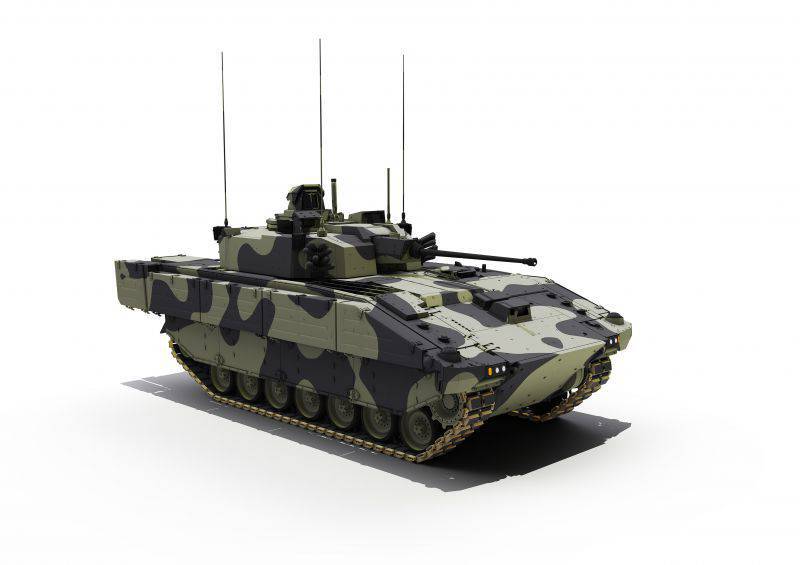
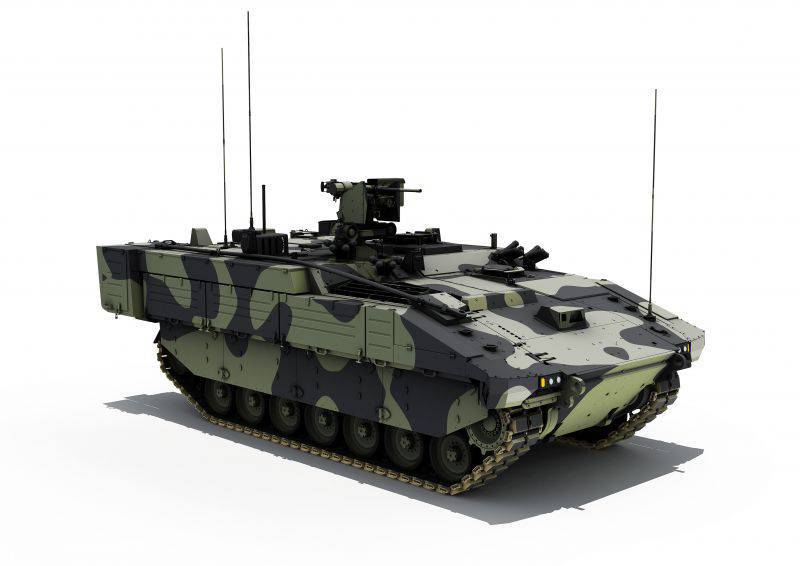
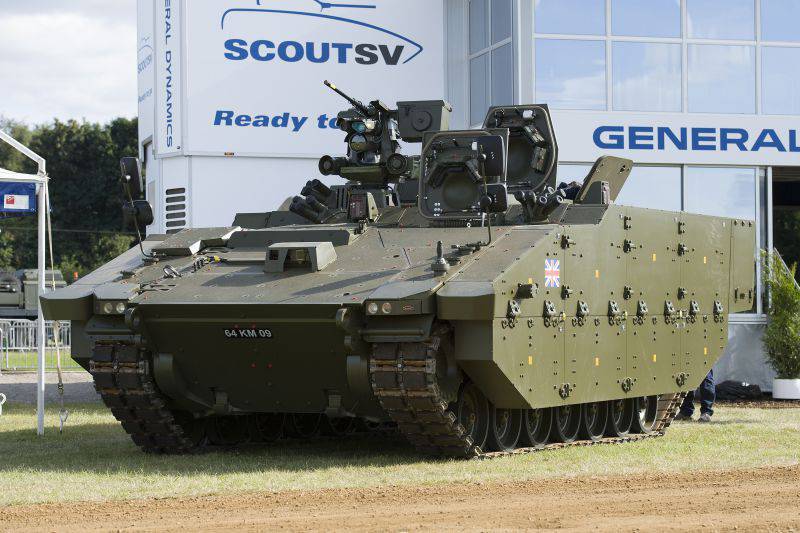
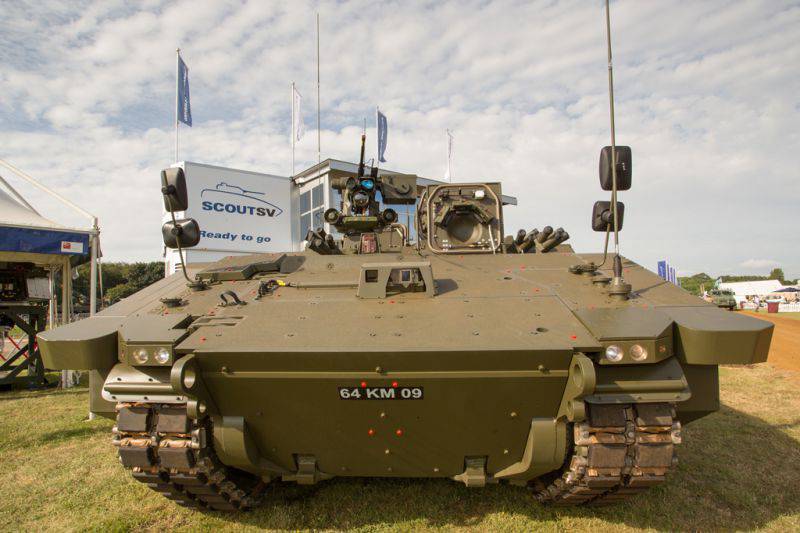
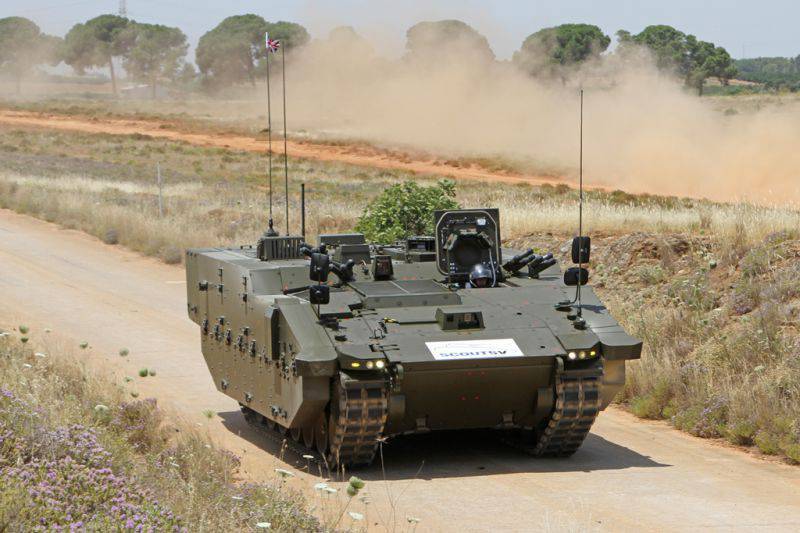
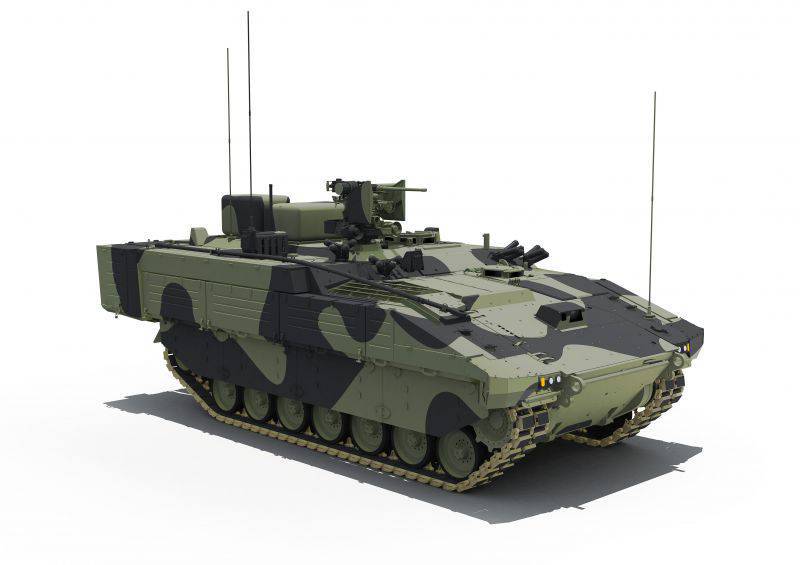
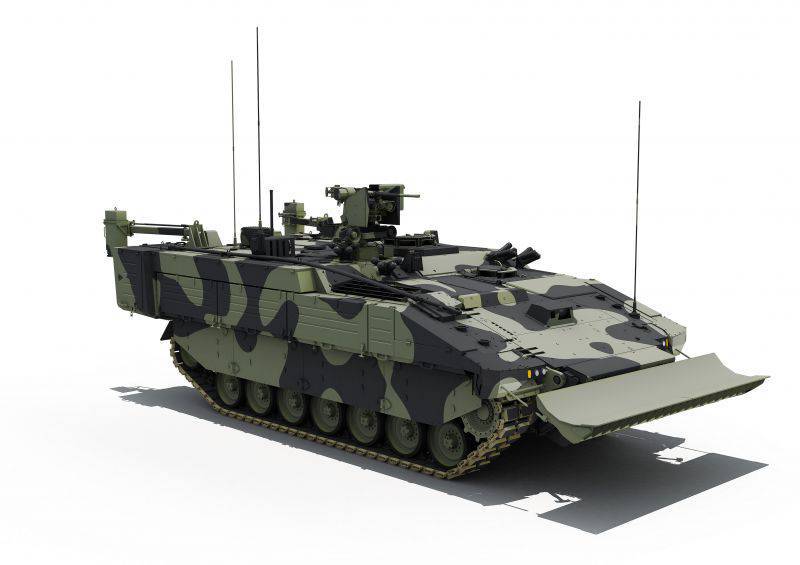
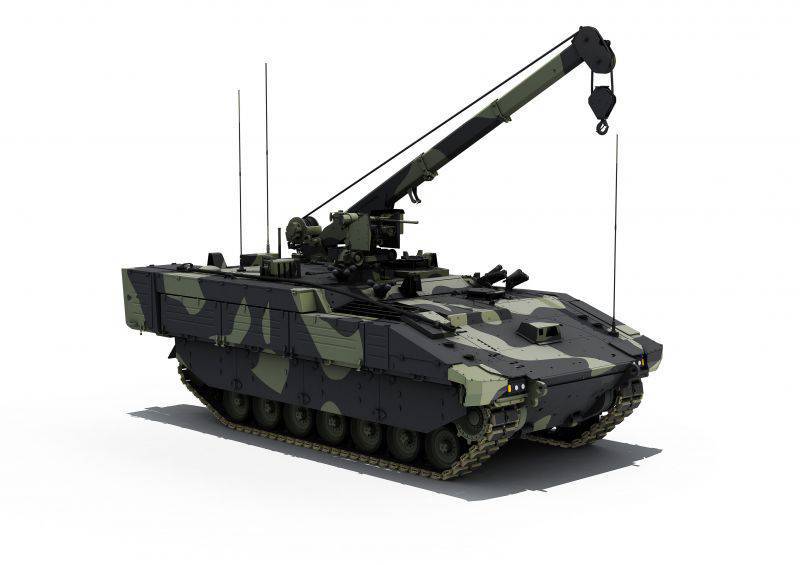
Information